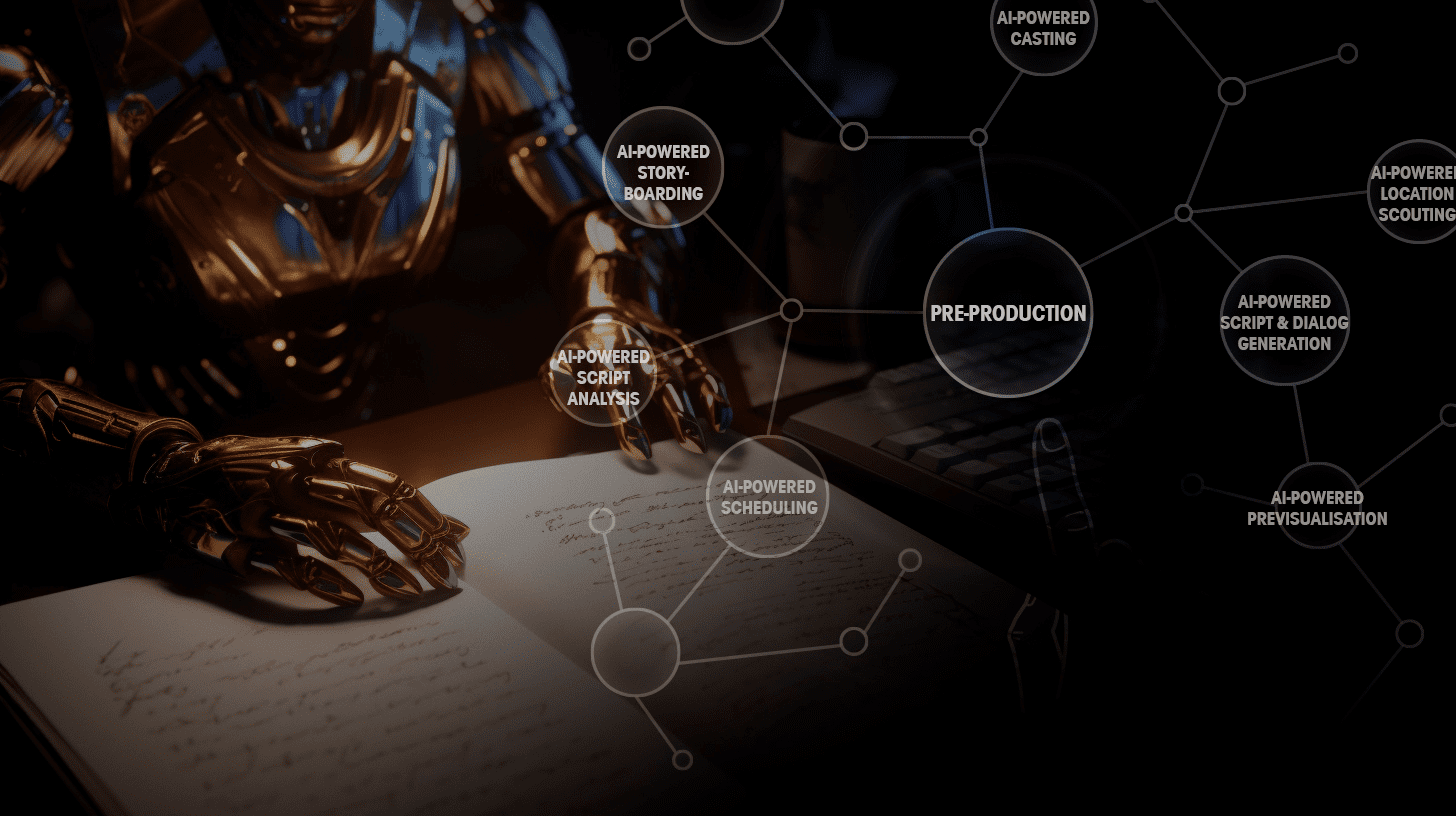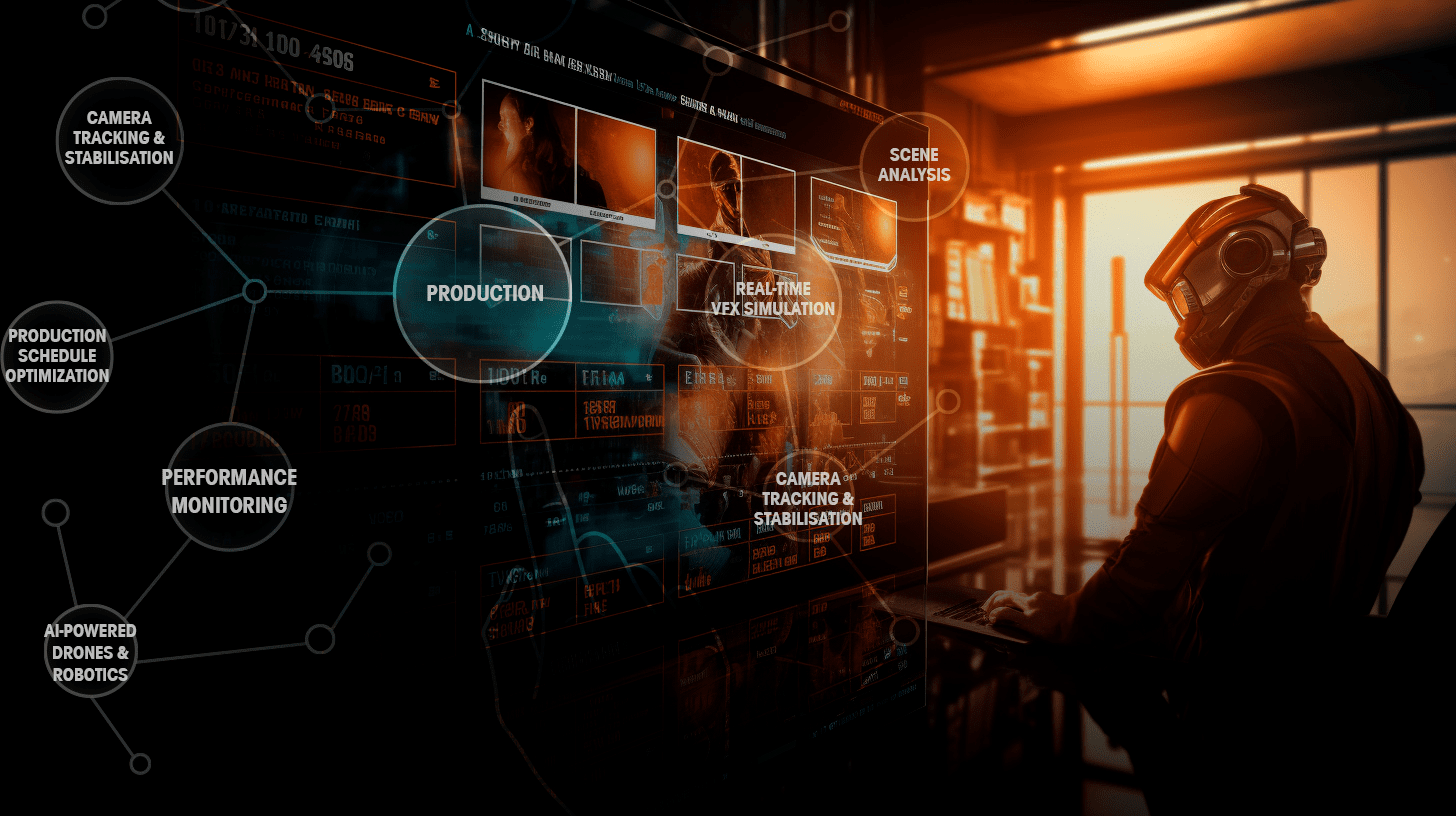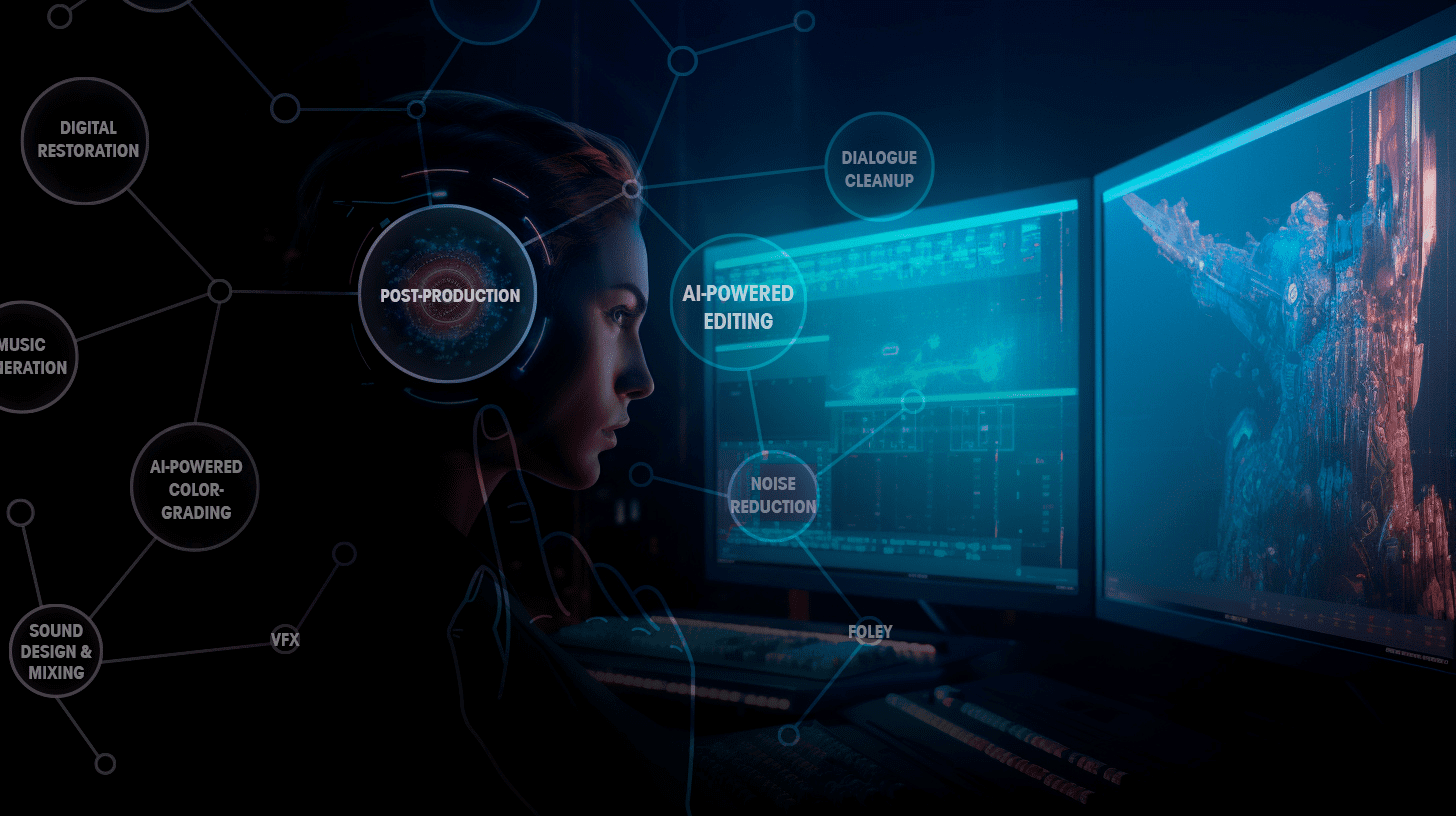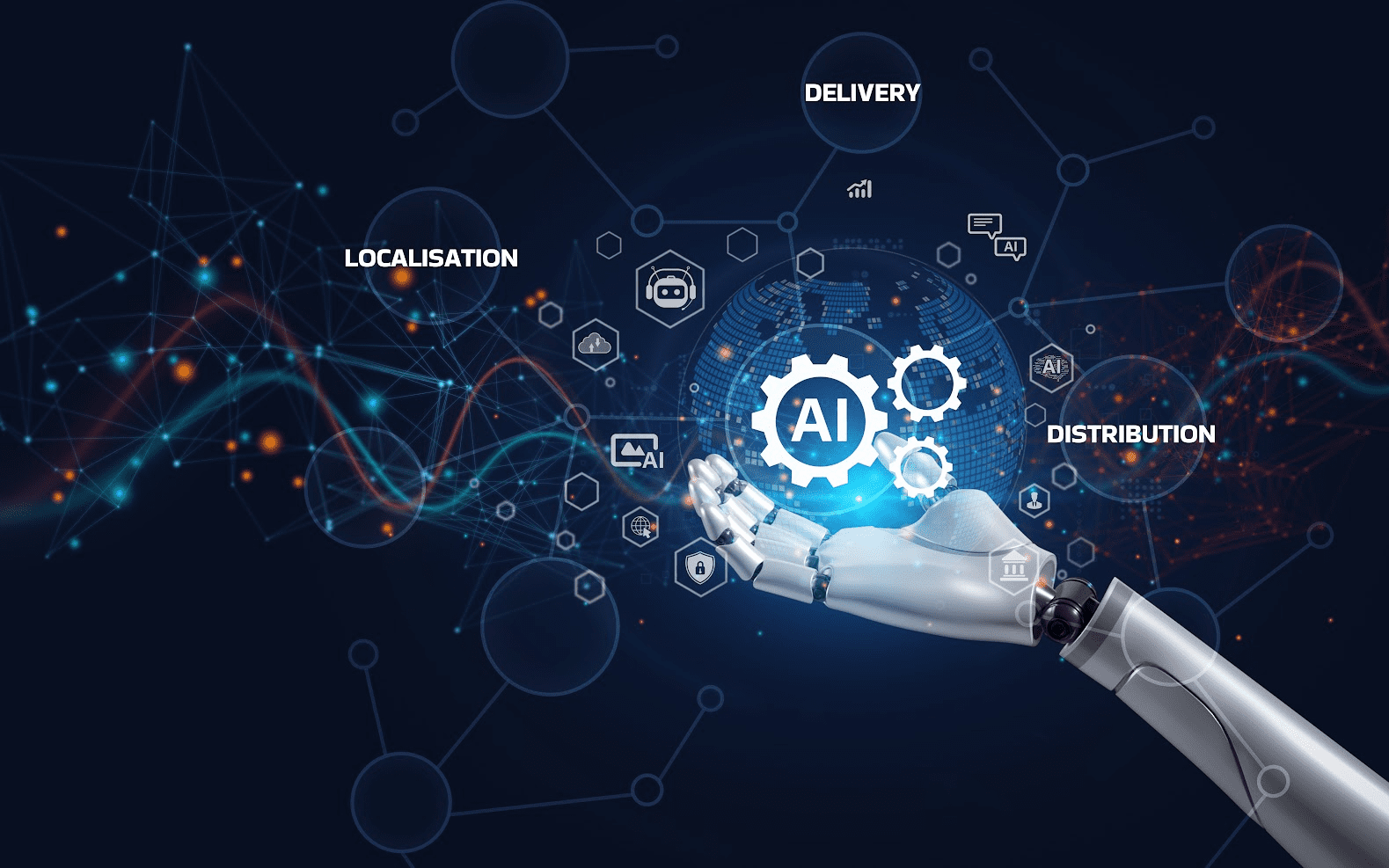AI in filmmaking is causing a remarkable transformation within the industry. This revolutionary technology is reshaping parts of the supply chain, from pre-production to distribution, offering filmmakers greater speed, automation, efficiency, cost-effectiveness, and creative possibilities like never before.
Pre-Production: Unleashing the Power of AI in Scriptwriting and Casting Decisions
In the pre-production phase, AI is making waves with its cutting-edge capabilities in scriptwriting, storyboarding, and casting decisions. Through Natural Language Processing (NLP) algorithms, AI analyzes scripts to extract vital data, including emotions, character arcs, and narrative structure. Filmmakers can leverage this valuable information to refine scripts and anticipate audience responses, ensuring a more captivating storytelling experience.
But that’s not all – many AI-powered storyboard and marketing video generators have emerged, such as D-ID, Cuebric, and Maverick, which allow rapid visualization of scenes and compositions, streamlining the planning process and offering filmmakers a clearer vision of their ideas.
In casting decisions, AI algorithms come into play as well, as companies like Casting Droid and Largo. AI utilize AI to match actors with suitable roles based on their performances, attributes, and past experiences. This approach opens up exciting possibilities for discovering new talent and creating more diverse and representative casts. ScriptBook and ScriptHop are AI-powered platforms that analyze scripts, predict audience reactions, and offer insights to help filmmakers refine their stories.
Production: AI-Powered Efficiency in Shooting Schedules and Cinematography
Moving on to the production phase, AI is transforming various aspects of filmmaking, from shooting schedules to cinematography. Companies like Scenechronize and Celtx use AI to optimize shooting schedules and allocate resources efficiently. By analyzing historical production data, weather patterns, and equipment availability, these platforms can predict potential bottlenecks and adjust schedules accordingly, ensuring a smoother production workflow.
In cinematography, businesses like ARRI and RED are pioneering the development of AI-powered cameras and robotic cinematography solutions. These advanced cameras can potentially automate various aspects of filming, such as framing, focus, and exposure, allowing for precise and consistent shots. With robotic cinematography, filmmakers can achieve complex camera movements without the need for large camera crews, reducing production costs significantly.
Furthermore, AI technology from companies like MorphCast and Affectiva is being used to analyze actors’ facial expressions and emotions during filming. This data provides valuable insights for directors and editors, helping them fine-tune performances and ensure consistent emotional portrayals across scenes. Similarly, Filmustage assists continuity supervisors in monitoring scene consistency and prop placements during filming.
Curious how Vitrina can help you? Try it out today!
Trusted by global entertainment leaders to grow business, acquire high-demand content, promote projects and services, and track every Film + TV production worldwide
Post-Production: From Automated Editing to AI-Enhanced Sound Design
The post-production phase is also experiencing a profound AI impact. AI-powered video editing software can analyze hours of raw footage, identify the best shots, and assemble them into cohesive sequences, significantly reducing editing time. Adobe with Adobe Sensei and Blackmagic Design’s DaVinci Resolve use AI to automate video editing tasks, such as scene segmentation, auto-cuts, and shot selection, significantly speeding up the editing process.
Automated color-grading tools enhance consistency across scenes and provide filmmakers with various creative looks to choose from. Filmora and Colorlab AI analyze footage to automatically adjust colors, contrast, and lighting, ensuring a consistent look throughout the film.
Foundry’s Nuke and Chaos Group’s V-Ray use machine learning algorithms to optimize rendering and compositing tasks, reducing rendering times and improving image quality. Sound Design and Mixing AI tools like Cryo Mix and Roex offer advanced audio processing capabilities, including noise reduction, dialogue enhancement, and dynamic audio mixing.
AI-based solutions like Pixop and Recuro Media assist in restoring and remastering old or low-quality footage, enhancing image resolution and reducing visual artifacts. Companies like Interra Systems offer AI-driven quality control tools that automatically detect and fix video and audio issues in post-production, ensuring the final product meets industry standards.
Not to forget, AI is revolutionizing visual effects (VFX) in filmmaking as well. With AI-powered algorithms generating lifelike characters, environments, and special effects with incredible precision, VFX artists can deliver jaw-dropping visuals in a fraction of the time it once took. Companies like Weta FX and Digital Domain are leading the charge in this AI-driven VFX revolution, bringing worlds and creatures to life like never before. Xsens is a company that specializes in motion capture technology using AI algorithms. Their motion capture suits and software allow filmmakers to capture real-life movements and translate them into realistic virtual characters in real-time. AI techniques like deep learning and Generative Adversarial Networks (GANs), Variational Autoencoders (VAEs), and Recurrent Neural Networks (RNNs) are some of the models utilized in Generative AI eliminating the requirement for expensive and time-intensive practical effects or animations.
These innovations are poised to address a wide array of challenges in the realm of visual effects, encompassing tasks such as crafting lifelike character animations and producing intricate visual environments.
Localization: AI Enables Seamless Translation and Dubbing for Global Audiences
As filmmakers aim to reach diverse international audiences, localization becomes a crucial aspect of the entertainment industry. AI-powered translation services assist in quickly and accurately translating subtitles and captions for various languages, making content accessible to a broader global audience. Companies like Unbabel, Wavel AI and Papercup offer innovative solutions in this realm, optimizing the localization process and ensuring cultural sensitivity.
Similarly, the dubbing industry is experiencing a revolutionary evolution known as Synthetic Voices or Synthetic Dubbing. This innovation involves training an actor’s original voice in one language to acquire nuances such as voice, accent, and other distinctive traits. Through this advancement, filmmakers can seamlessly replace the original audio with the voices of actors speaking different languages, ushering in a new era of accessibility and inclusivity. Flawless AI, Respeecher, are among the AI-powered dubbing platforms that provide seamless voiceover options, making films more inclusive and accessible.
Finishing and Delivery: Streamlining the Final Stages of Filmmaking
Keeping up with the latest trends and impactsThe finishing and delivery phase is the final frontier of filmmaking, where the completed content is prepared for distribution. AI-driven solutions have streamlined this stage by automating processes and ensuring content meets industry standards.
Companies like Deluxe Media offer AI-driven post-production services that automate the creation of deliverables, such as different aspect ratios and formats for theatrical release, streaming platforms, and television. This streamlining process ensures that content is ready for distribution quickly and efficiently, minimizing delays.
Distribution: AI Driven Insights to Reach the Right Audience
The last and crucial phase of filmmaking is distribution. AI is playing a significant role in this domain by providing data-driven insights and optimizing the delivery process. Companies like Movio and Cinelytic use AI to analyze audience behavior and preferences, enabling film distributors to target the right audience and predict a film’s potential success in different markets.
Vitrina AI’s Role in Identifying Changes in the Industry
As the entertainment supply-chain evolves, Vitrina AI will be playing its part in bringing together the best projects to the most innovative and specialist companies around the world!
Viitrina’s mission is to help pair content demand and project requirements from large entertainment groups to the most qualified and deserving vendor partners.
For this purpose, our proprietary, AI-powered, pairing-engine uses our powerful supply-chain search, vendor intel and ranking algorithms. Vitrina’s platform takes the guesswork out of the partner selection process and makes the business of entertainment – faster, efficient, secure and global.
Parting Thoughts
As AI continues to evolve, we can expect even more groundbreaking innovations that push the boundaries of filmmaking, offering filmmakers unparalleled tools to bring their artistic visions to life. Watch this space for more Intel on AI.





























